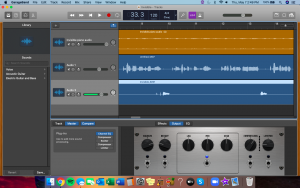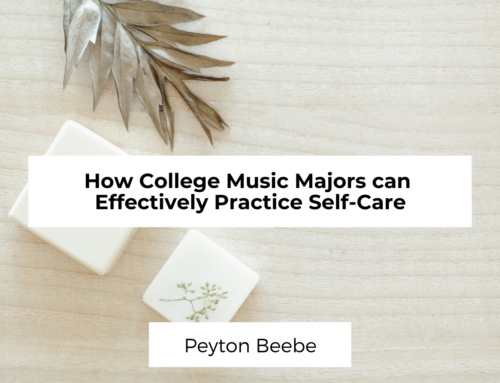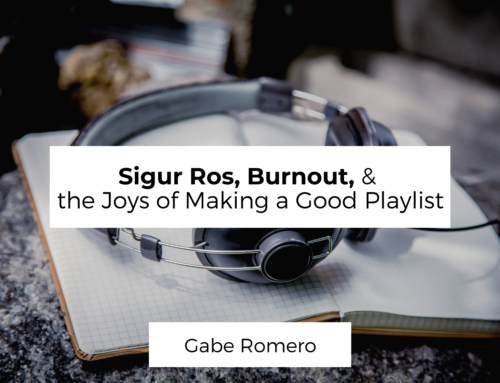Kindergarten Home-School Help – written by Lea Wehnau
This week, we are featuring a project for the younger students! This project called “Kindergarten Home-School Help” was requested by a mother named Ms. Rippley. Ms. Rippley reached out to MSL because she has a kindergarten-aged son at home and she wanted to continue his arts education until the school could supply lessons and activities. She didn’t know what music lessons fit in the kindergartener’s curriculum and needed help developing music lessons that were practical for her to implement at home, but still educational and fun!
 Elesa Stolzfus, a music education student attending West Chester University, was on the case! Elesa developed two lessons that she shared with Ms. Rippley. One was a great cross-curricular project involving reading a book that can be sung. Elesa even supplied a video to be used if they did not own a book that worked! Ms. Rippley reported back that, although this was intended for her kindergartener son, her two-year-old joined in! The second lesson involved creating and playing a shaker. Ms. Rippley and her son creatively made shakers out of toilet paper rolls and plastic easter eggs, filling them with rice or dried corn and compared the different sounds they produced. With their shakers, they played games together, including a repeat-after-me style game, supplied by Elesa.
Elesa Stolzfus, a music education student attending West Chester University, was on the case! Elesa developed two lessons that she shared with Ms. Rippley. One was a great cross-curricular project involving reading a book that can be sung. Elesa even supplied a video to be used if they did not own a book that worked! Ms. Rippley reported back that, although this was intended for her kindergartener son, her two-year-old joined in! The second lesson involved creating and playing a shaker. Ms. Rippley and her son creatively made shakers out of toilet paper rolls and plastic easter eggs, filling them with rice or dried corn and compared the different sounds they produced. With their shakers, they played games together, including a repeat-after-me style game, supplied by Elesa.
At the end of the project, Ms. Rippley thanked Elesa and told her they had a lot of fun. Elesa shared that she has enjoyed every project she has worked on, but this project was one of her favorites. She found searching resources and formulating simple lesson plans incredibly interesting.
Choir Practice Tracks – written by Nicole Faiola
Theresa Thomasulo, a 5-8 choir director in Los Angeles, requested help with some practice tracks for her choir. Nicole Faiola and Malaika Paralkar took on this project and used their unique skills to accomplish the task. Thomasulo requested five songs with piano accompaniment and vocals. Since Malaika studies music composition and production at West Chester University, she decided to create the piano accompaniments with notation software – this allowed the accompaniment to sound clean and precise. Nicole, a music education major with a vocal concentration at West Chester University, took on the role of the track singer. After Malaika finished her accompaniments, Nicole learned each vocal part of the pieces and recorded them in GarageBand so the students could hear their parts alone or with other voices.
 One unique aspect of this project came from a class composition Thomasulo sent to Nicole for vocals. Nicole noted that she “attended an ACDA session at the regional conference this year about composing music with your choir and it really piqued [her] interest as something [she] would love to do in the future. It was cool to see someone who actually did it!” Since Thomasulo already had a NoteFlight accompaniment for that piece, Nicole worked on it alone, but really enjoyed singing a song created by students.
One unique aspect of this project came from a class composition Thomasulo sent to Nicole for vocals. Nicole noted that she “attended an ACDA session at the regional conference this year about composing music with your choir and it really piqued [her] interest as something [she] would love to do in the future. It was cool to see someone who actually did it!” Since Thomasulo already had a NoteFlight accompaniment for that piece, Nicole worked on it alone, but really enjoyed singing a song created by students.
The whole project took about a week to complete. At the end, Thomasulo had many positive remarks for Nicole and Malaika like the following: “Thanks SO much! You’ve been wonderful and my students are so grateful, as well” and “You guys are honestly amazing.” Hearing the appreciation of the student helpers brought them great joy and they were happy to have assisted this music teacher.
Online General Music K-4 – written by Renee Short
Music Service Learning, or MSL, is a great resource for teachers who are looking for ideas about online teaching. Another highlighted project that shows what MSL is all about is project 30, “Online General Music K-4”. This project involved working across state lines to compile resources from across the internet, to utilize in the classroom setting. Two MSL helpers, Stephen Hayes and Julia Strohl, worked together to compile various activities for students in grades K-4. These activities included YouTube videos, listening maps, rhythm exercises, composer biographies and lesson plans.
 The found resources were meant to focus in the areas of rhythm, composer, and genre. These resources were then organized by the type of resource, such as Youtube video or website. Stephen and Julia found many resources for learning the Kodály rhythm syllables. These syllables are more conducive to being learned through spoken word so aural resources are the best way to learn them. As for composers, information was gathered on Baroque, Classical, and Romantic composers. The helpers also included information about a few more modern ones, like Copland and Bernstein. All resources were compiled into a Google document and sent to the requesting teacher, who was very grateful for the information provided by her Music Service Learning helpers.
The found resources were meant to focus in the areas of rhythm, composer, and genre. These resources were then organized by the type of resource, such as Youtube video or website. Stephen and Julia found many resources for learning the Kodály rhythm syllables. These syllables are more conducive to being learned through spoken word so aural resources are the best way to learn them. As for composers, information was gathered on Baroque, Classical, and Romantic composers. The helpers also included information about a few more modern ones, like Copland and Bernstein. All resources were compiled into a Google document and sent to the requesting teacher, who was very grateful for the information provided by her Music Service Learning helpers.




Leave A Comment